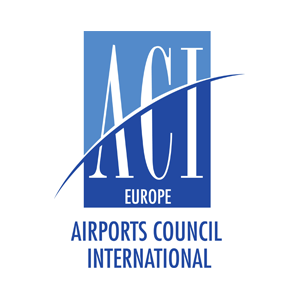Strong performing summer ahead for Europe’s regional airports, whilst volatility and performance gaps remain

At the annual gathering of Europe’s regional airports and their business partners taking place today and tomorrow in Chania, Crete, the latest industry analysis from ACI EUROPE has described a market segment which is simultaneously outperforming with a positive summer ahead, whilst also warning of disparities in the pace and strength of recovery and continued financial challenges.
The 14th Annual ACI EUROPE Regional Airports Conference and Exhibition – hosted by Fraport Greece, operator of 14 regional airports across the Greek mainland and islands – provides the opportunity to review trading conditions and address the key challenges faced by regional airports in providing sustainable air connectivity in support of local development, territorial equality and cohesion.
POSITIVE YET DISPARATE TRAFFIC OUTLOOK & INCREASING COMPETITION
Regional airports have kept outperforming other segments of the market since the beginning of the year, having recovered almost 93% of their pre-pandemic (2019) passenger volumes1 – compared to 87% for hubs and other larger airports2. This reflects traffic dynamics still driven by leisure and VFR (Visiting Friends & Relatives) demand, boosted by the expansion of Ultra-Low Cost Carriers and predominantly relying on the intra-European, North African and Transatlantic markets.
Addressing the immediate traffic outlook, Olivier Jankovec, Director General of ACI EUROPE commented: “The Summer season looks very positive for regional airports overall as they are seeing airline seat capacity just above pre-pandemic levels – which is not yet the case for larger airports3. Passenger demand keeps defying inflationary pressures, in particular record increases in air fares. At the same time, disruption risks across the aviation eco-system have receded. This is the result of earlier planning, massive recruitment and improved wages – although air traffic management (ATM) capacity and social unrest remain a significant concern in some countries.”
But Jankovec cautioned over the permanence of significant gaps in performance both across national markets and individual airports: “The traffic recovery has come with more volatility and also more disparity. This is largely down to much increased airport competition on a pan-European level, as the market is shifting towards fewer and ever more powerful airlines – with Low-Cost Carriers now very much dictating the fate of regional airports.”
FINANCIAL VIABILITY CHALLENGE
Achieving financial viability has always been a challenge for smaller regional airports due to a number of structural issues, including traffic seasonality and demand imbalance across the year, as well as higher fixed costs and the lack of economies of scale achieved by larger airports. But the massive losses accumulated during the pandemic, coupled with the renewed airline buyer power which results in suboptimal revenues from user charges mean prospects for improved financial viability are murky – especially for airports with less than 1 million passengers per year4.
“User charges levied by regional airports have been consistently decreasing over the past 3 years and today, in real inflation-adjusted terms are 13.4% lower than in 2019. Meanwhile airline fares have increased by +26% so far this year. This is not sustainable moving forward – especially given how the current inflationary environment and interest rate rises are weighing on our costs. What is at stake is the ability of airports to keep investing in sustainability, digitalisation and capacity. And while we will need to keep the flexibilities afforded by current EU State aid rules, we also need airlines to pay a fairer price for the use of our facilities” said Jankovec.
MOVING FASTER TO NET ZERO REGIONAL AIR CONNECTIVITY
Adherence to the user pays principle also relates to sustainability and in particular decarbonisation. A record 207 regional airports across Europe are now certified for carbon management and reduction under Airport Carbon Accreditation5 – the institutionally endorsed global standard – compared to 146 a year ago. Beyond reducing scope 1 & 2 emissions and adhering to their related Net Zero CO2 targets, airports are also increasingly looking at supporting and driving reductions in scope 3 emissions6.
But there is no escaping the fact that more resources and accompanying measures will be needed to progress faster, especially in view of the ambitions and content of forthcoming EU Regulations. Regional airports are especially vulnerable to the impact of FIT FOR 55 – as all related measures apply fully to intra-European routes on which they rely. Research from Oxera7 shows that passenger demand will fall by close to 20% at regional airports – inevitably compromising the connectivity they provide to their communities.
Marco Pernetta, Chair of ACI EUROPE’s Regional Airports Forum and CEO of Innsbruck Airport said: “Whilst FIT FOR 55 is an absolute necessity, Governments and policy makers still need to look at and address the risks involved in terms of cohesion, territorial equality – and ultimately the risk of backlash against climate action. As the European Commission failed to provide a comprehensive impact assessment of FIT FOR 55, these have been largely ignored – at our own peril. Regional airports now account for 35% of total direct air connectivity in Europe, up from 29% ten years ago. We need a European strategy for sustainable regional air connectivity which ensures regional aviation can quickly become the testbed for the decarbonisation of aviation, along with necessary compensating measures. This can be done well before rail development could effectively come close to provide any suitable alternative at the scale and scope required.”
ACI EUROPE moved analysis on this vital market segment forward today with the publication of its report European Regional Airports: Sustainably Connecting People, Places and Products. The report explains the key role played by regional airports in Europe in particular during the COVID recovery along with key passenger and traffic data. The report also explores some of the key regulatory hurdles faced by regional airports and the policy frameworks that need to be put in place to address their needs, including financing their decarbonisation. The report is publicly available on ACI EUROPE’s website8.
